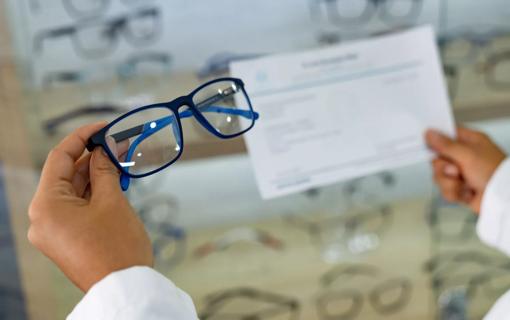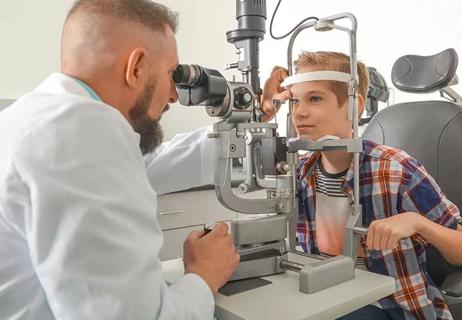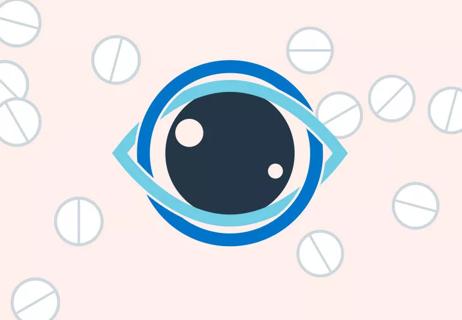And six warning signs for when they're not

Once an idealistic 20-something, you thought this day would never come. But here you are at your local pharmacy, trying on — gasp! — your first pair of reading glasses. Has it really come to this?
Advertisement
Cleveland Clinic is a non-profit academic medical center. Advertising on our site helps support our mission. We do not endorse non-Cleveland Clinic products or services. Policy
The medical term for this seemingly inevitable rite of passage is presbyopia, and it describes how our vision changes as we age. But is there any way to avoid it?
“Nothing escapes time,” says ophthalmologist Claudia Perez-Straziota, MD. “Our hair doesn’t. Our joints don’t. And our eyes don’t. But there are things you can do to lessen the impact.”
Our eyes are like a camera — the lenses inside automatically focus on whatever we need to see. “That process works through the contraction and relaxation of certain muscles that move our lens forward or backward,” explains Dr. Perez-Straziota. “When we’re young, our eyes can ‘accommodate,’ or focus at different distances, without the help of glasses or other aids.”
But as we age, our body gets less firm — and not just our waistline. Those eye muscles also experience a middle-age spread and start losing their ability to adjust and accommodate. The dominoes keep falling, eventually affecting your ability to see things up close.
“This is called presbyopia. It’s not just common — it’s a given. And it starts happening at around age 40,” reports Dr. Perez-Straziota.
Aging eyes don’t pull any punches either. So as your lens muscles weaken, the crystalline lens’ proteins change as well. This affects the shape and transparency of the lens, which is called a cataract and is another normal process of the aging of our eyes. “It eventually becomes too cloudy to see clearly,” notes Dr. Perez-Straziota. “At that point, cataracts are an issue.”
Advertisement
What are the signs of presbyopia — other than being over 40? “It’s variable,” says Dr. Perez-Straziota. “Presbyopia and cataracts are like white hair. Everybody gets them at some point, but the question is when and how fast.”
Some signs that you may be experiencing cataracts include:
Some signs that you may be experiencing presbyopia include:
“For instance, you are focusing in the distance and then look down to read your phone. When you try to look at that distance again, your vision is blurry at first and eventually comes back into focus,” says Dr. Perez-Straziota.
These signs come on slowly (think a drippy faucet versus a burst pipe). “You will not wake up and say, ‘Today, I can’t see,’ ” explains Dr. Perez-Straziota. “More likely, you’ll start realizing that you’ve been experiencing these things, and you can’t pin down exactly when it all started.”
Dr. Perez-Straziota says that a routine eye exam is a must. The American Optometric Association recommends this appointment schedule for healthy adults:
“If you have a personal or family history of medical eye conditions or diabetes, go every year,” says Dr. Perez-Straziota. “If you have other medical conditions, or have already been diagnosed with an eye condition, follow the schedule that your healthcare provider recommends.”
If you notice a change in your vision between eye exams, Dr. Perez-Straziota recommends making an appointment with your optometrist or ophthalmologist. They will not only check your prescription and vision, but they’ll also rule out anything else that could be going on. “If you think you may have presbyopia, you can first try your pharmacy to see if reading glasses help.”
Some vision changes can’t be blamed on presbyopia. See your doctor if you notice:
Rest assured, presbyopia and other eye conditions are treatable. From glasses and contacts to implants and surgery, there is a wide range of options to help you see clearly again.
Advertisement
Advertisement
Learn more about our editorial process.
Advertisement

Your eye prescription reveals a lot about your eye health, including how they’re shaped, how well you see and what your new glasses can do for your sight

Plan on an annual vision screening, but a full exam may not be necessary

Our vision and eye experts have the clear answer

Weighing benefits against age-related macular degeneration risk

Most recommended precautions center around minimizing bruising or swelling

Even one drink can have an impact on your cognitive function leading to slurred speech, blurred vision and impaired memory

Type 2 diabetes isn’t inevitable with these dietary changes

Applying a hot or cold compress can help with pain